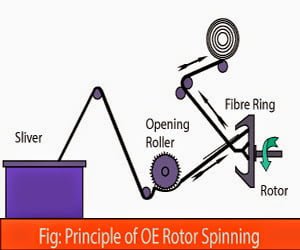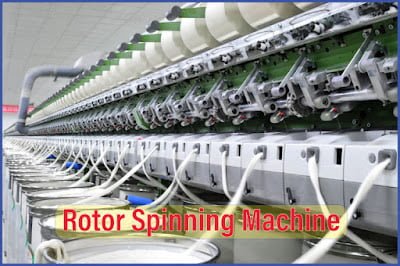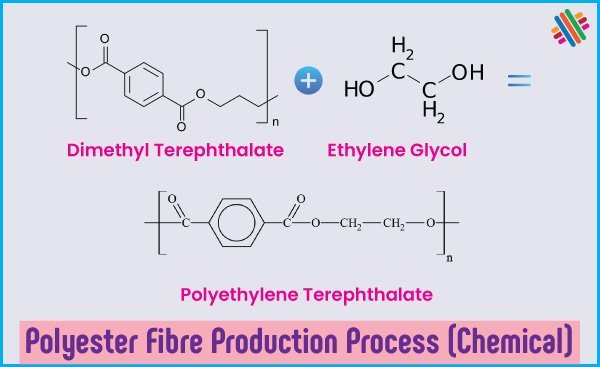Working Principle of Rotor Spinning
Last updated on November 22nd, 2023 at 08:51 pm
Now a day rotor spindles occupy at least 6% of the world’s total installation. However, this may seem like a small percentage, but this figure is significant when taken in yarn production, as a large percentage of yarn spun on this system is in the coarser to medium count range. Open-end rotor spinning has become an inseparable part of spinning technology. Its many benefits from both the textile and economic viewpoint have been speedily recognized and exploited equally.

In this process fibres from the draw frame sliver, supply is separated from one another on an opening roller, taken over by an air stream, led through a fibre guide channel, and fed to the rotor. In the revolving rotor housing, the fibres lay themselves and form a ring. Out of this rotating ring, the fibres are withdrawn in a plane more or less perpendicular to that of the fibre ring.
The rotor’s rotation acts on the fibres in the form of twists when they leave the fibre ring plane. This leads to a consolidation of the fibres amongst one another, i.e., to form a yarn. This yarn is directed away from the open end area and is subsequently wound on a cylindrical bobbin to create a cross-wound package. The thread obtains a ‘real’ twist. As a result of the fibre-yarn geometry during twist insertion, the fibres do not have the idealized helicoid configuration as in a ring yarn. Now and then, fibres also coil themselves on the thread across the longitudinal yarn axis. These places are called wrappers. A further reference is made to them later in a direct comparison between the open end and ring yarns.
You may also like: What is Yarn: Definition and Meaning
This spinning has established itself so far in short-staple spinning. The accent lies in the course count range (3 Ne to 30 Ne or 20 Tex to 200 Tex). Due to improvements in the technique and machine construction, combined with combed slivers, count up to 41 Ne is available in good quality. Even finer counts are not only being aimed at but are also being presented to some extent.
In short-staple spinning, open-end rotor spinning raises performance at this stage by about 5 to 6 times compared to ring spinning.
You may also like: An Overview of Open-End Rotor Spinning



